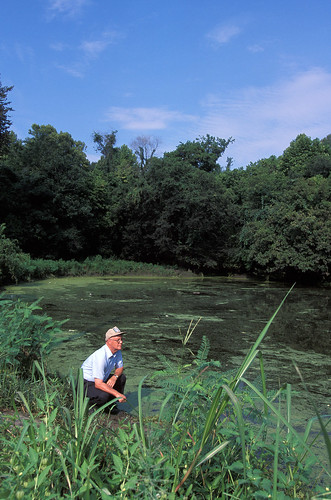
This post is part of the Science Tuesday feature series on the USDA blog. Check back each week as we showcase stories and news from USDA’s rich science and research portfolio.
When it rains it pours. Whether we get a passing shower or a day-long downpour, the runoff ends up in rivers, streams and waterways. That runoff may include nutrients from fertilizers, and one of those nutrients is phosphorus.
Phosphorus runoff is causing blooms of harmful algae that deplete waterways of oxygen, resulting in “dead zones” that damage ecosystems vital for aquatic life. It’s a problem in many of the waterways we all depend on for recreation and drinking water, including the Great Lakes and Chesapeake Bay. Just last year, Maryland’s outgoing governor proposed land use regulations designed specifically to reduce phosphorus runoff in the Chesapeake watershed.
USDA’s Agricultural Research Service (ARS) scientists have been looking for ways to address the problem by using gypsum, which binds with phosphorus in the soil and prevents it from running off. There is no shortage of gypsum. In fact, one type is a byproduct of scrubbing the sulphur out of power plant emissions and is used to make wallboard.
Studies by ARS soil scientist Allen Torbert, Dexter Watts and their colleagues at the National Soil Dynamics Laboratory in Auburn, Alabama, have shown that when this industrial gypsum is applied to the soil with poultry litter, it reduces phosphorous runoff by 50 to 60 percent. Torbert and colleagues working in Beltsville, Oxford and elsewhere, also have found that gypsum reduces the potential for pathogens, such as E. coli, in poultry litter and cow manure to be transported in runoff and reach drinking water supplies. The gypsum improves soil infiltration and curbs algae growth by binding with phosphorus in the soil, so that less phosphorus is available to algae as a nutrient.
The studies have been instrumental in setting key policies. USDA’s Natural Resources Conservation Service (NRCS), which sets national standards for maintaining soil quality, used the ARS findings in best management practices published this summer, including a recommendation that farmers use gypsum to reduce the risk of phosphorus runoff. NRCS also used them in developing Alabama’s “Phosphorous Index,” a guideline for determining phosphorous runoff risks in specific fields.

